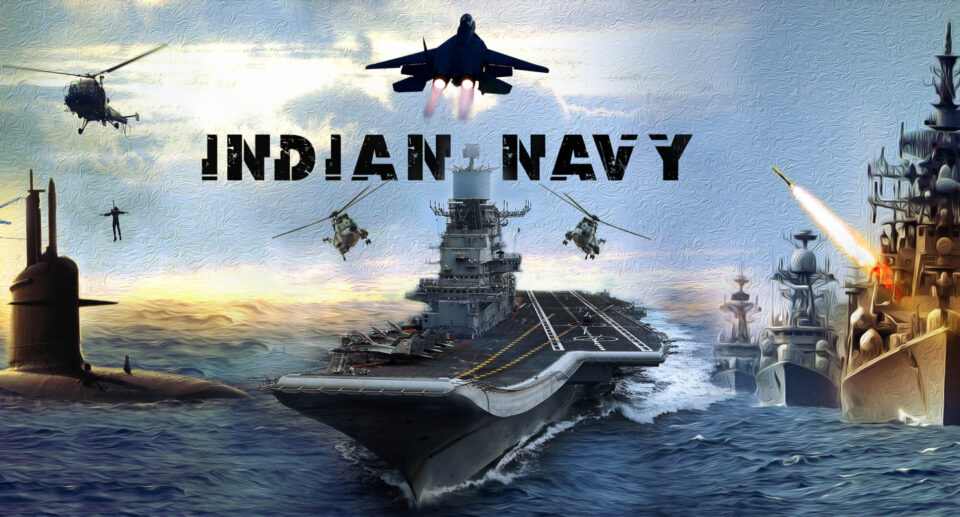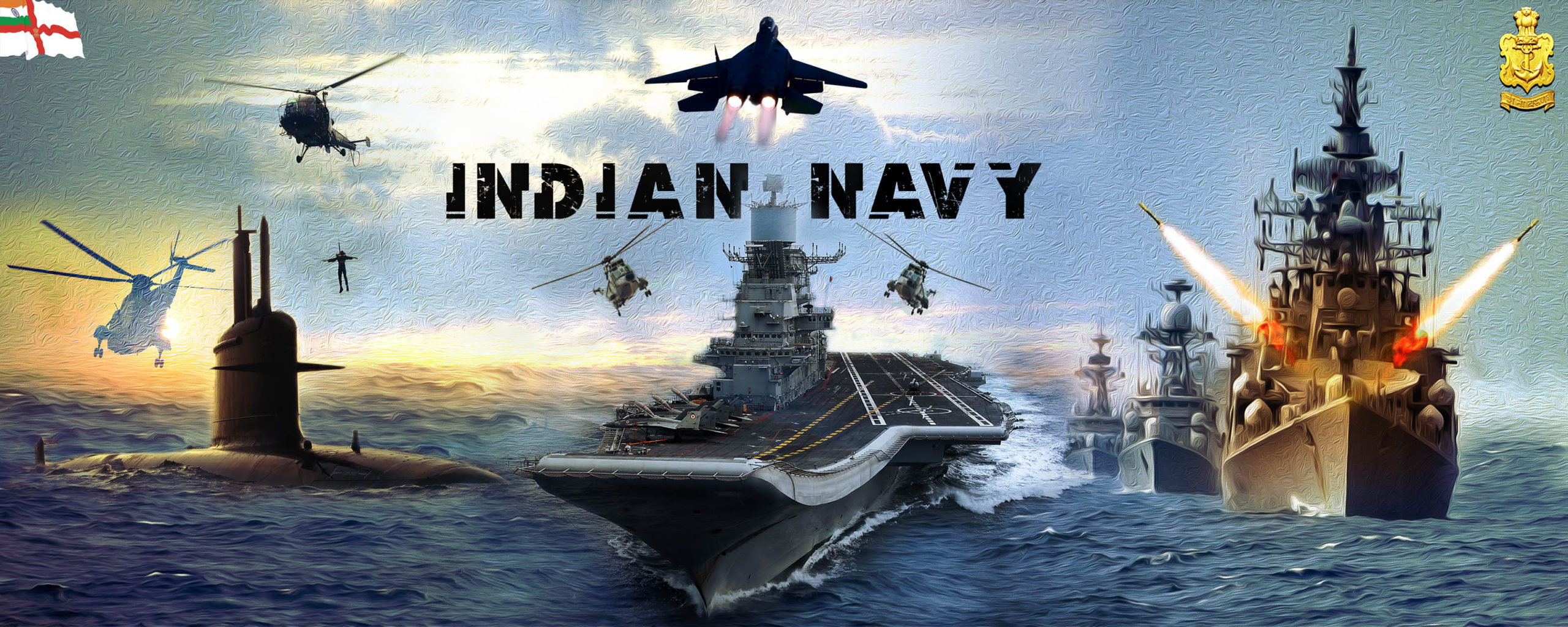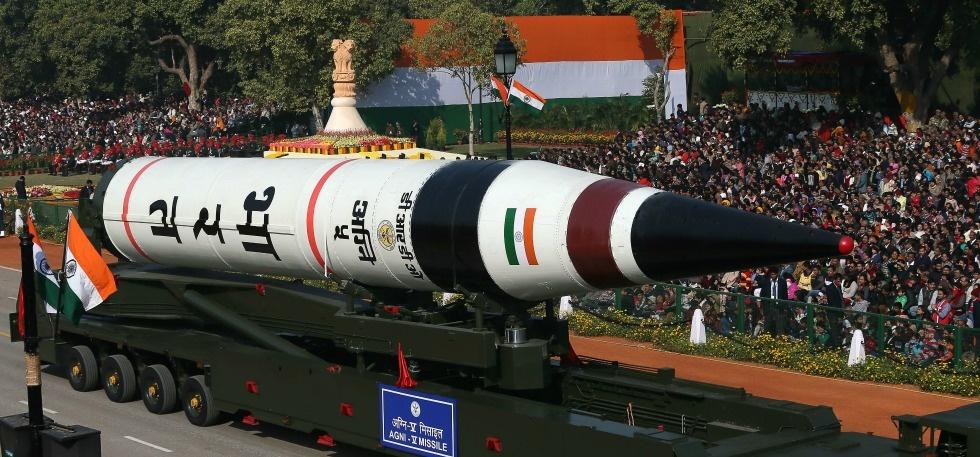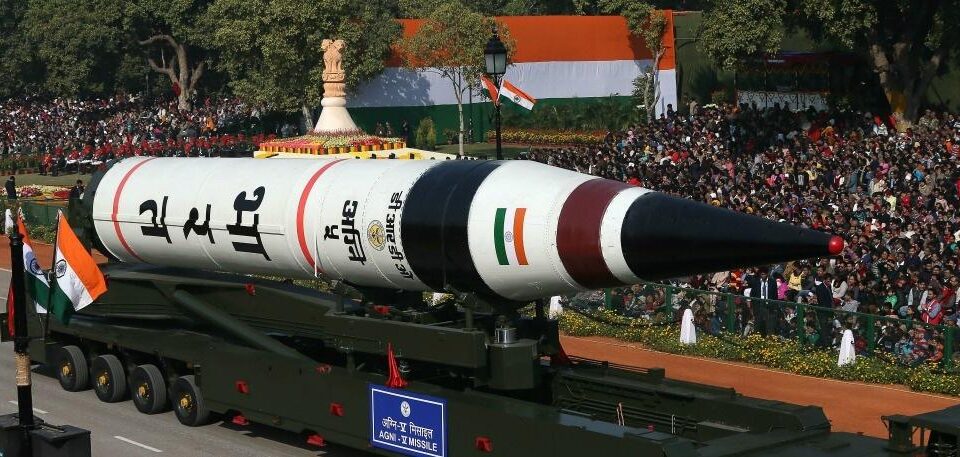From Ancient Legacy to Modern Force: India’s Growing Maritime Influence

We knew we had to act swiftly and decisively. The safety of the crew was paramount.
In the heart-pounding pre-dawn hours of March 2nd, 2024, Lieutenant Commander Yadurao of the INS Kolkata received a distress signal. A merchant vessel, MV Reuben, had been hijacked by pirates in the Gulf of Aden. The urgency of the situation was palpable. As Lt. Commander Yadurao recalled later,”We knew we had to act swiftly and decisively. The safety of the crew was paramount.”
Bharatiya Navy’s Aspirational Legacy

The Indian Navy’s rise mirrors India’s historical maritime prowess, evident throughout various eras. During the 11th century AD, empires like the Cholas and Rashtrakutas dominated the seas from the Arabian Sea to the Bay of Bengal, their powerful fleets playing a crucial role in trade and territorial expansion. Following suit, the Maratha Empire, which flourished in the 17th and 18th centuries, developed a formidable navy under the leadership of Chhatrapati Shivaji Maharaj. Maratha warships, known for their manoeuvrability and innovative tactics, challenged the dominance of European powers like the Portuguese and established control over key coastal regions.

Today, the Indian Navy aims to reclaim its position as a formidable naval power, backed by a formidable arsenal and unwavering commitment to maritime cooperation and security. It draws inspiration from this rich maritime heritage, striving to safeguard India’s interests and ensure regional stability in the Indo-Pacific.
Distinctive Factors
What distinguishes the Indian Navy is not just its formidable fleet but also its commitment to fostering maritime partnerships. “The addition of the INS Vikrant marks a watershed moment for the Indian Navy,” says Commodore Ajay Singh, a retired naval officer and defence analyst. “It bolsters our ability to project power and safeguard our strategic interests in the Indo-Pacific.”
Moreover, India’s focus on indigenization and technological innovation has propelled the Indian Navy into a league of its own. Indigenous development of aircraft carriers, like the recently commissioned INS Vikrant, stealth frigates, and submarine-launched ballistic missiles showcases India’s maritime capabilities and determination to defend its interests.
Recent Acquisitions and Future Plans

The Indian Navy has recently bolstered its fleet with several key additions, including:
- INS Vikrant: India’s second indigenously built aircraft carrier, commissioned in 2023, significantly enhances the Navy’s power projection capabilities.
- INS Agray and INS Akshay: These shallow water crafts, built by Garden Reach Shipbuilders and Engineers Limited (GRSE), bolster India’s anti-submarine warfare (ASW) capabilities.
- INS Visakhapatnam: The latest warship in the Indian Navy, successfully test-fired a naval variant of the BrahMos Supersonic Cruise missile in January 2022, adding firepower to the fleet.
- LSAM 15 (Yard 125): This landing ship and auxiliary craft, the first of its class, plays a crucial role in amphibious operations and exemplifies the “Make in India” initiative’s success in the defense sector.
Vice Admiral R. Hari Kumar, Chief of the Naval Staff, recently stated, ‘Our robust shipbuilding program ensures a future-proof Navy capable of meeting the evolving challenges of the maritime domain.’ This investment in our naval capabilities strengthens not only India’s security but also fosters regional stability.
Operation Sankalp and Global Engagement
Moreover, India’s maritime prowess has been further underscored by the recent success of Operation Sankalp. Launched in mid-December 2023, this ongoing mission has seen the Indian Navy respond to numerous incidents, including:
- Thwarting a piracy attempt on the FV Iman by the offshore patrol vessel INS Sumitra in January 2024.

- Rescuing the fishing vessel Al Naeemi and its Pakistani crew from Somali pirates, also by INS Sumitra in January 2024. “The rescue of the Al Naeemi crew by INS Sumitra is a testament to the Indian Navy’s unwavering commitment to protecting seafarers,” said a spokesperson for the Pakistan Fishermen’s Association. “Their timely intervention saved the lives of our fishermen, and we are immensely grateful.”
- Providing critical assistance to the British oil tanker targeted by a Houthi attack in the Gulf of Aden, using INS Visakhapatnam in January 2024.
- The dramatic mid-sea operation culminated in the seizure of the hijacked MV Ruen in March 2024. This complex operation involved the warship INS Kolkata, long-range Sea Guardian drones, P-8I surveillance aircraft, and the airdropping of elite MARCOS commandos from an Air Force C-17 aircraft.
Conclusion

These recent successes highlight the Indian Navy’s vital role as a “Sea Guardian” in the Indian Ocean region, ensuring vital trade routes remain free from Somali pirate threats and increasingly sophisticated attacks like those by the Houthis. As we navigate the complex currents of the 21st century, the Indian Navy’s rise as a preeminent naval power in the Indo-Pacific is not just a matter of national pride but a source of reassurance for the entire maritime community. With each passing day, the Indian Navy’s footprint grows larger, its influence more profound, and its commitment to maritime security unwavering. In the vast expanse of the Indo-Pacific, the Indian Navy’s flag flies high, a symbol of India’s maritime resurgence and a testament to its enduring legacy as a maritime power.










